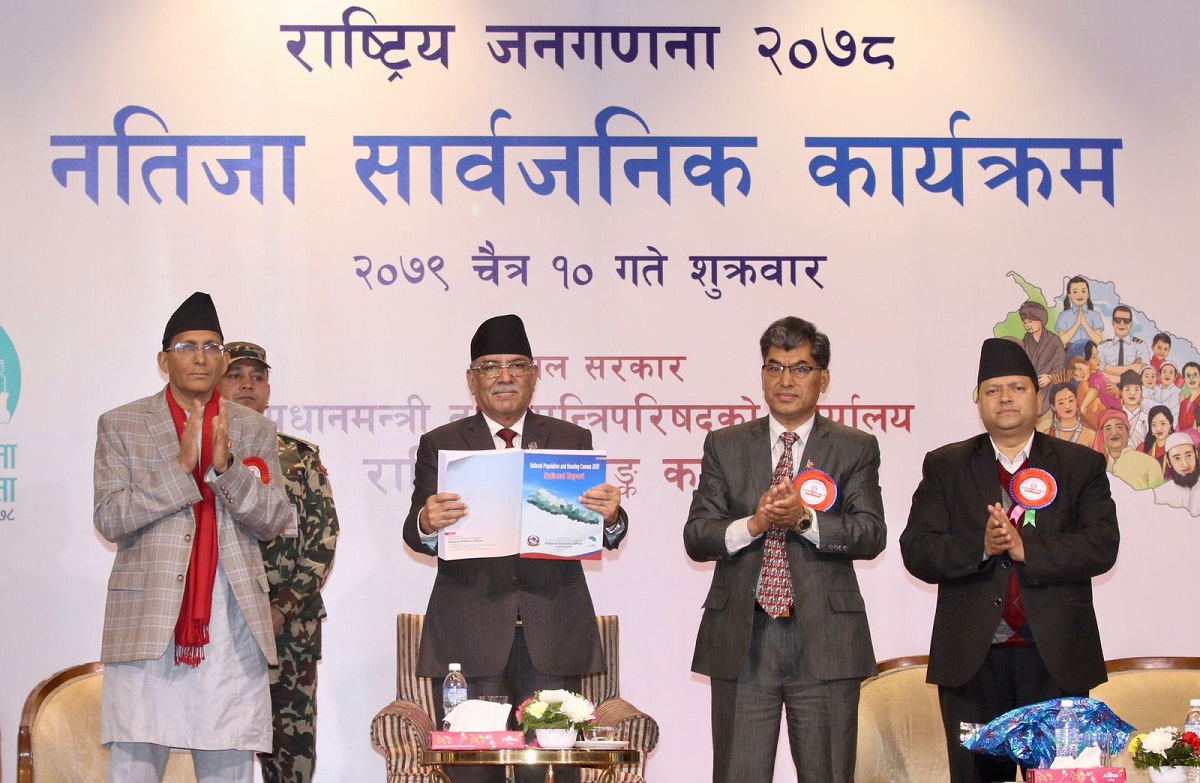The population of Nepal has reached 29,164,578.
The final and detailed report of the 12th Census made public by the National Statistics Office on Friday has put the number of men at 14,253,551 (48.98%) and women at 14,911,027 (51.02%). The population of other genders is 2,928 (0.001).
The Central Bureau of Statistics publishing preliminary results of the Census 2021 on January 26 had put the country's population at 29,192,480. The final result has reduced that figure by 27,902.
The reference date for the Census has been kept as November 25, 2021.
Tarai region has the highest proportion of population at 15,634,006 (53.61), the hilly region 11,757,624 (40.1 percent) and the mountainous region 1,772, 948 (6.08).
Kathmandu is the district with highest population of 2,041,587 while Manang has the lowest population of 5,685.
Bagmati province, similarly, has the highest population at 20.97 percent and Karnali the lowest at 5.79 percent.
The Census has put the number of households at 6,666,937 including 6,660,481 nuclear families and just 6,096 joint families. Each household has 4.37 members. It was 4.88 in the Census 2011.
The proportion of urban population has jumped in the last 10 years to 66.17 percent from 63.19 percent while that of the rural population has fallen to 33.83 percent from 36.81 percent.
The latest Census has also showed that around 2.20 million Nepalis stay abroad. The number includes 1,799,675 men (82.2%) and 390,917 women (19.8%). The number of Nepalis living abroad was 1,921,494 as per the 11th Census.
A total of 1,555,961 households have at least one member living abroad.
Bhaktapur district has seen the highest annual growth rate of 3.5 percent in the past 10 years while Ramechhap has seen its population shrink at the highest annual rate of 1.67.

